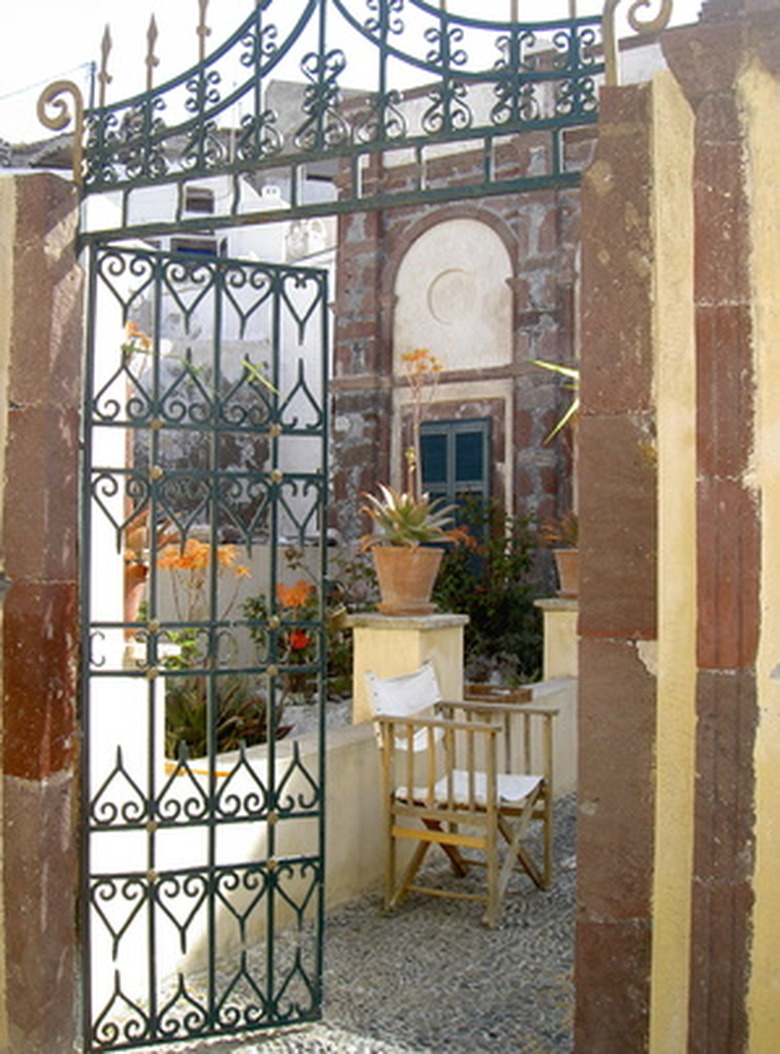Low Cost Alternatives To Concrete Patio
While concrete patios or paver patios are attractive, they can be expensive. Updating old patios with dyes or stains is the most cost-effective way to liven up an old concrete patio, but if you are looking to add a new patio or replace an old one, you may want to find low-cost alternatives to a concrete patio. Materials like gravel or mulch create a natural environment that influences the overall design of the yard.
Using Gravel
Gravel may not be the first material that comes to mind for creating a patio, but gravel is available in a wide variety of textures and colors and is an affordable alternative to concrete. Gravel can be used alone, contained in a wooden frame to prevent the pebbles from migrating to other areas of the yard or used in conjunction with a variety of materials for a personal and creative patio design.
Although not every gravel type is suitable for patio use, you can alternate styles to add texture and interest. When selecting gravel, look for stones like granite or lava rocks that will compact under use for a firm, steady surface that prevents tables and chairs from rocking during use.
Before pouring gravel, you'll need to excavate the soil to a depth of 4 inches. You also will need to have a 2-inch base of large gravel for draining, so be sure to include this layer in your budgeting costs. The gravel you plan to use for the patio should be a half-inch below the top of your wooden frame, roughly an inch or so deep.
Sand
Sand is perhaps the easiest design material and requires very little care or maintenance. Using sand as your patio material will provide a summer, beach-style retreat that not only is comfortable for your feet, but also provides ample playroom for young children.
For sand patios, you will need to excavate the area or keep the sand contained with landscaping timbers or other edging material. You should also build a draining sublevel with large gravel, roughly 2 inches deep, then cover over the gravel with a tarp or similar material and fill the patio area with clean sand. The sand should measure 4 inches deep to support furniture and for regular use.
Mulch Ideas
Although traditional wood patios usually are not cheaper than concrete ones, it is possible to use wood materials to create an informal patio that is both attractive and affordable. Wood mulch is one of the easiest materials to work with and is readily available in a wide assortment of colors.
For this idea, you should begin by creating a rectangular or square frame from sturdy edging timbers or decking posts to contain the mulch. You could also use large landscaping rocks or pavers to create a contrasting or circular edge. You should fill the patio area with large gravel or sand about 1 inch deep for draining purposes, and then cover the patio area with your preferred style of mulch. Mulch will compact over time to create a sturdy base for patio furniture.
Patio Mats
Patio mats or outdoor rugs are the cheapest material available and can be moved from one location to another as needed. Many mats have an assortment of designs that complement any design theme and come in a variety of materials that are weather-resistant and easy to care for.
Using a Combination of Materials
Using a combination of materials can meet your designs needs while keeping your budget in line. For example, you can create large sturdy bases for furniture by purchasing inexpensive ready-mix concrete. You can make your own molds from plastic-lined pizza boxes or shallow buckets and arrange them under the intended seating area. Instead of concrete, you could also build sturdy wooden platforms for the furniture. Save money by filling in the rest of the patio space with inexpensive materials like moss, marbles, or any material that sparks your creativity to create your own space. Flowers and plants add a delicate, contrasting element to the design, introducing enticing aromas and attracting a variety of butterflies and hummingbirds.
Bargain Shopping
You may be surprised at some of the materials available through bargain outlets. Ask your local home improvement store if they have any leftover materials from another person's patio project or any scratch-and-dent supplies on sale that you can use for your courtyard design. Check with local donation centers for distinctive pieces that can influence your design idea.
